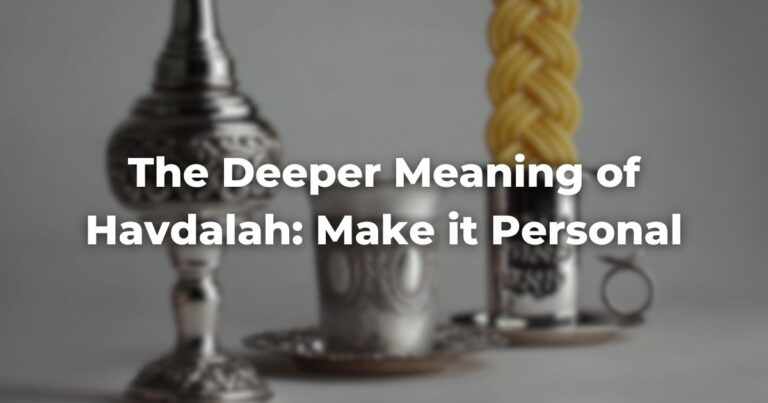Gather around, folks! The world’s most fashion-forward Jew in the pew is here, in her infinite wisdom, to talk about how to dress for the High Holidays.
I come to this website for content, and while most of the time I’m not here for snark, I cannot possibly talk about fashion without tucking my tongue into my cheek. I am a person who definitely doesn’t dress as nice as her toddler on a day-to-day basis. I am a person who would wear “soft pants” every day if given the chance. I am a person who cannot wear high heel shoes.
And yet, and yet. I’ve got you covered. You know, however you want to cover yourself with clothing. I’m going to write this guide for people who identify as female, male, and outside the gender binary.
Everything I’m writing here can also be applied to dressing children, and I will note here: make sure you’re comfortable, and all the more so, make sure your kiddos are, too.
So, how to cover your corporeal self for the high holidays at your friendly neighborhood shul? Gather round.
Step One: What would you wear to an office on a day when you had to dress nice, but not in a suit?
Business casual staples work very well for the high holidays. You can also wear a suit if you want – in some places, this is de rigeur, but nobody’s going to turn you away because you’re not wearing a sweet blazer. Some places won’t let you on their bima (stage) without a jacket on, but if it’s your first time, they’ll probably be kind to you if you’re just wearing a sweater or button-down.
Step Two: Check the weather.
I grew up in south Florida. Often, I had to wear tights, and as I got older, pantyhose. Thankfully, those are really not required anymore, and for sure you’re not going to get forced into wearing tights. Once you check the weather, you’ll know if you need to wear rain boots or a rain jacket, and if maybe you’re going to sweat through your shirt on your way into the synagogue.
Step Three: Footwear.
If you haven’t been to High Holidays services ever, they can seem long. They’re definitely longer than your average Saturday morning. So, feel free to go fashion forward in some sweet new boots or fancy heels, but remember: you’ll be standing for long periods of time while you sing and/or read.
You might have to park far from the entrance or stand in a line while they check tickets. You might want to go for comfort here.
I also strongly suggest you break in shoes before you wear them to the High Holidays. Nobody wants to be distracted from really gorgeous prayer services by a blister blooming inside a new pair of kicks.
Step Three and a Half:
Yom Kippur (not Rosh Hashanah) is a time when we are going back to the basics, fashion-wise.
We are standing at the judgment day of a year and we are all the same in the eyes of God. Practically, that means you’re not supposed to wear leather-soled shoes (this is not the day to wear your Toms). You can actually wear leather shoes that have wood or rubber bottoms, but many people love taking Yom Kippur as their day to wear Crocs or shiny new canvas sneakers.
There’s also a tradition to wear white on Yom Kippur, if that’s your thing. It was never as strong as my personal tradition to dress in my personal brand: Crayola Comfort (aka layers of different-colored clothing).
Step Four: Ritual garb.
Start at the top, with head coverings.
Kippah, hat, scarf, fascinator, nothing – you can cover your head as you feel called. Traditionally, covering your head with a kippah is step one of ritual garb.
You can grab one from the communal supply, but also, many people like to make a fashion (or nostalgia) statement – matching the head covering to the rest of the outfit, or wearing a kippah from your best friend’s wedding.
Most synagogues will require people who identify as men to wear a kippah, and it depends on where you’re going how they address people who identify as women and nonbinary covering their heads.
Then there’s the tallit, if you wear one.
If you have your own, bring it, but you can also borrow from the communal racks at most synagogues. Similar to kippah practices, many require people who identify as male to wear a tallit, and leave it up to people who do not identify as male to do what they choose.
For synagogues that require non-males to wear a tallit, they often enforce this mostly when they’re going onto the bima. Mostly, tallitot are worn for morning services. One of the things that makes Yom Kippur so special is that tallitot are also worn for Kol Nidre, the service that brings in Yom Kippur, all the way through Neilah the service that ends Yom Kippur – and closes the Book of Life for the whole year.
And, if you’re looking to do this varsity-style, you can get a special white garment that you wear over your clothing, called a kittel.
It’s worn, traditionally, by a person yearly on Yom Kippur, to their wedding, and then they are buried in it. If you want to get a kittel but have never tried, I’d say connect with clergy about it – but you can find one at your local Judaica store (or online).
Or, you know, just wear a white top or dress and see what everyone else wears in your new community.
Step Five: Get acclimated!
If you’re joining a community for the first time, there’s probably someone who can help you get the vibe before you ever walk into the shul. Someone who works at, or is a member at, the shul can tell you if this is a business formal shul, an everybody-kippah shul, or a if-athleisure-went-to-shul kind of place.
Step Six: What to carry?
Some synagogues have very specific bag requirements, and some have security details who will check your belongings in metal detectors.
As a general rule, bring a tallit bag, a tote bag, or a small purse with things you might need. I carry, in a tote bag, in addition to my ritual garb, my license/insurance cards, sunglasses case, some tissues (you might cry during Yom Kippur’s (and Shemini Atzeret’s) Yizkor, the service for remembering the deceased), my medicines, lip balm, a water bottle, and a snack.
You can bring your own Machzor (prayerbook for the High Holidays), but they’ll definitely have the liturgy available for you.
Step Seven: When in doubt, you cannot go wrong with business casual.
If you would wear it to a seminar at work, you’re going to feel comfortable enough to sit back and focus on what actually matters, the soul inside of the person who is wearing the brand new crocs with the matching kippah…or fascinator!
Finally: Do some Googling.
That probably brought you here, but take a peek at the way people would dress for shul years ago. I honestly miss the parade of hats I used to see in the 80s. I can’t even imagine how awesome it was in the early 1900s.
Author
-

Sara Beth Berman is a writer, advisor, and storyteller, has spent her career as an Experiential Jewish Educator and Consultant, working on curriculum development, professional learning, and programmatic initiatives. Sara Beth worked at The Jewish Education Project, UJA-Federation NY, the Foundation for Jewish Camp, Storahtelling, and a variety of summer camps. She has written for a variety of publications, including Kveller and Alma. She is proud to do work with the Gender Equity in Hiring Project. Sara Beth is a proud graduate of JTS’s Davidson School, and, as a career highlight, hosted a podcast for JTS about grief and loss.
View all posts




